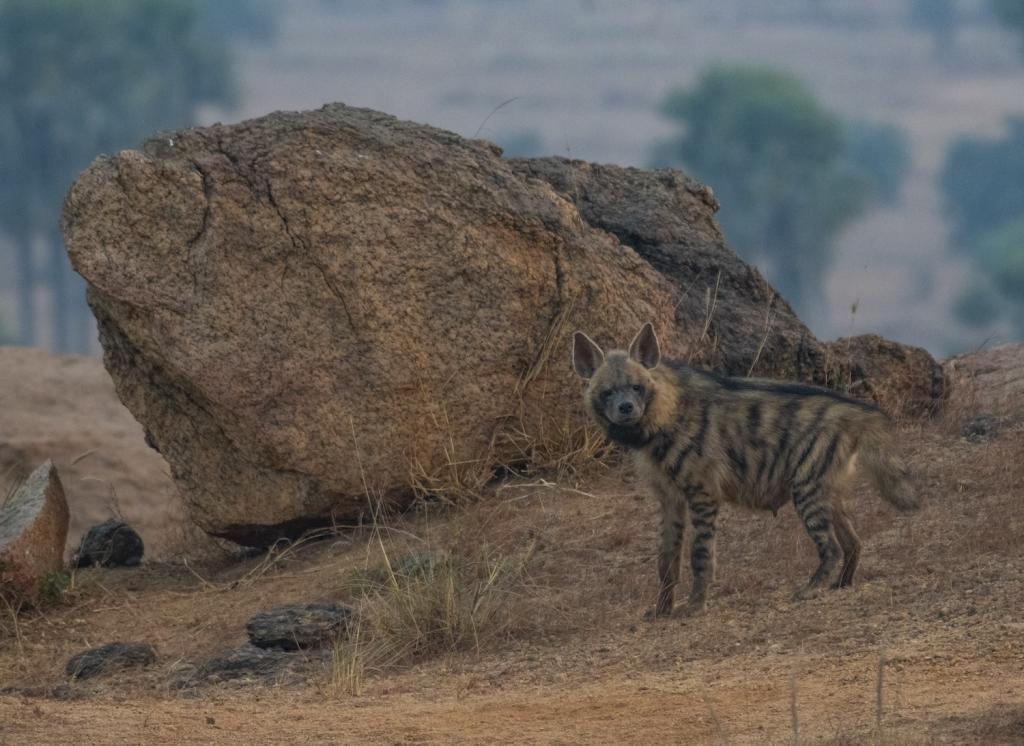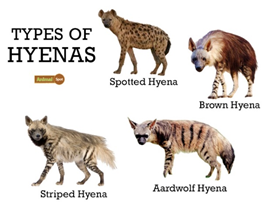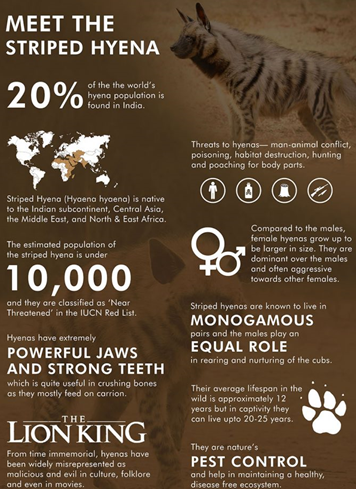





Disclaimer: Copyright infringement is not intended.
Context:
International Hyena Day and its importance:
About Hyenas

Physical Description and Appearance:

Threats to Striped Hyenas:
|
Conservation Initiative: A case of rapid action project (RAP) Wildlife Trust of India (WTI), in collaboration with Debayan Gayen and the West Bengal Forest Department (WBFD), initiated a rapid action project (RAP) to secure the future of striped hyenas in Purulia. The project focuses on raising awareness among local communities about co-existing with wildlife and the importance of conserving striped hyenas. ●Community Engagement and Education: Through education programs, workshops, and outreach initiatives, the project aims to foster a sense of ownership and stewardship among residents, encouraging sustainable practices to minimize conflicts and promote harmonious interactions between humans and wildlife. ●Scientific Research and Data Collection: Field studies led by Gayen and his team employ advanced techniques like camera traps to gather crucial data on hyena populations, behaviors, and threats, informing evidence-based conservation interventions. ●Multi-stakeholder Engagement: The project emphasizes the importance of multi-stakeholder engagement for devising effective conservation strategies, involving governmental agencies, educational institutions, local communities, and researchers. ●Capacity Building and Training: Collaboration with local stakeholders aims to enhance their knowledge and skills in wildlife monitoring, conflict resolution, law enforcement, and community outreach through training workshops, seminars, and skill development programs. ●Awareness and Education Efforts: Workshops and seminars, like the one organized by the Department of Conservation Biology, Durgapur Government College, raise awareness about the ecological importance of striped hyenas among young researchers and college students. ●Documentation and Research: Field research includes documenting social perspectives towards hyenas among local people and identifying various threats, providing insights for formulating long-term conservation plans. Significance: ●The Striped Hyena Conservation Project in Purulia sets an example of dedicated collaboration with governmental agencies, educational institutions, and local communities to protect the threatened species. ●The project serves as a model for hyena conservation across India, demonstrating that dedication, collaboration, and education can safeguard even the most misunderstood creatures for generations to come. |
Details and conservation status of Hyena:
Source:
|
PRACTICE QUESTION Q) Consider the following statements about Hyenas: 1. They are herbivorous mammals. 2. They are categorized as endangered species in the IUCN red list. 3. They are native to India. How many of the statements given above is/are correct? A.Only one B. Only two C. All three D. None Answer: D) Explanation: Statement 1 is incorrect: Hyenas are the least diverse of the living carnivores The four living species of hyenas are ○Spotted hyena ○Brown hyena ○Aardwolf and ○Striped hyena They belong to the Hyaenidae family of the Hyaena genus. They are hunters and catch their prey using their teeth instead of claws. Statement 2 is incorrect: IUCN Status ·Status of the Striped Hyenas - Near Threatened ·Status of Spotted hyena- Least Concern ·Status of Brown hyena – Near Threatened ·Status of Aardwolf – Least Concern Statement 3 is incorrect: ·They can be found over a range in north and northeast Africa, from the Middle East to southern Siberia as well as the Indian subcontinent. ·In India, It is found in the states of Rajasthan, Uttar Pradesh, Karnataka, Tamil Nadu, West Bengal, etc. |







© 2025 iasgyan. All right reserved